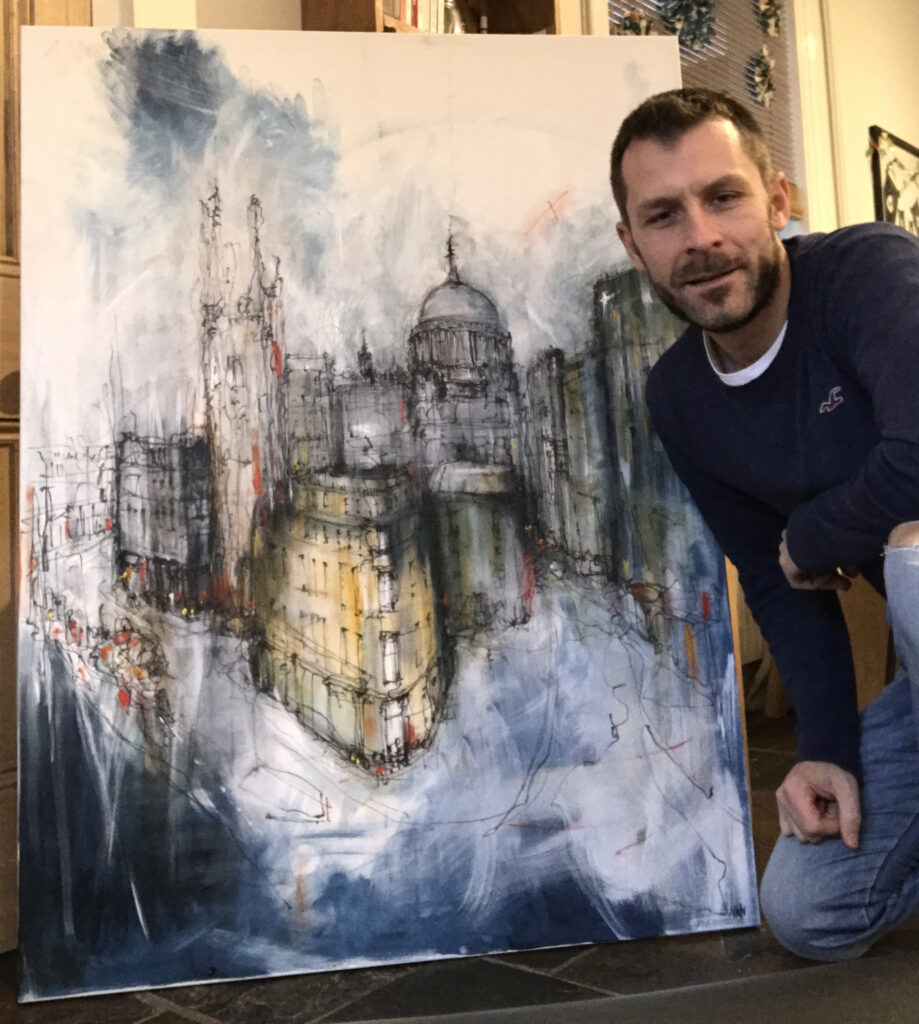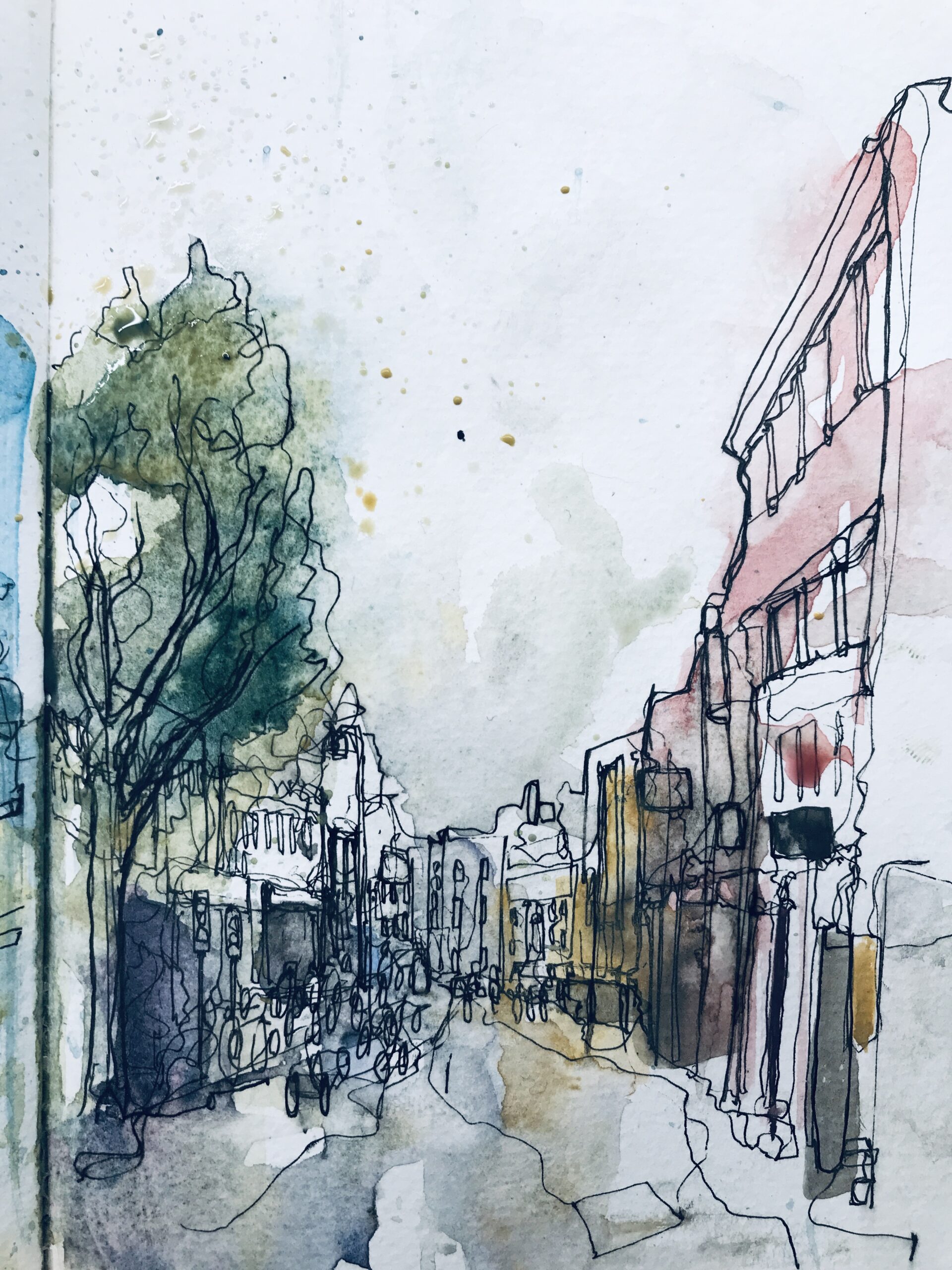Welcome to Friday Artist Features! Every Friday we feature an artist whose work often includes themes of urbanism. This week we are featuring Neil Whitehead, an English urban landscape artist.
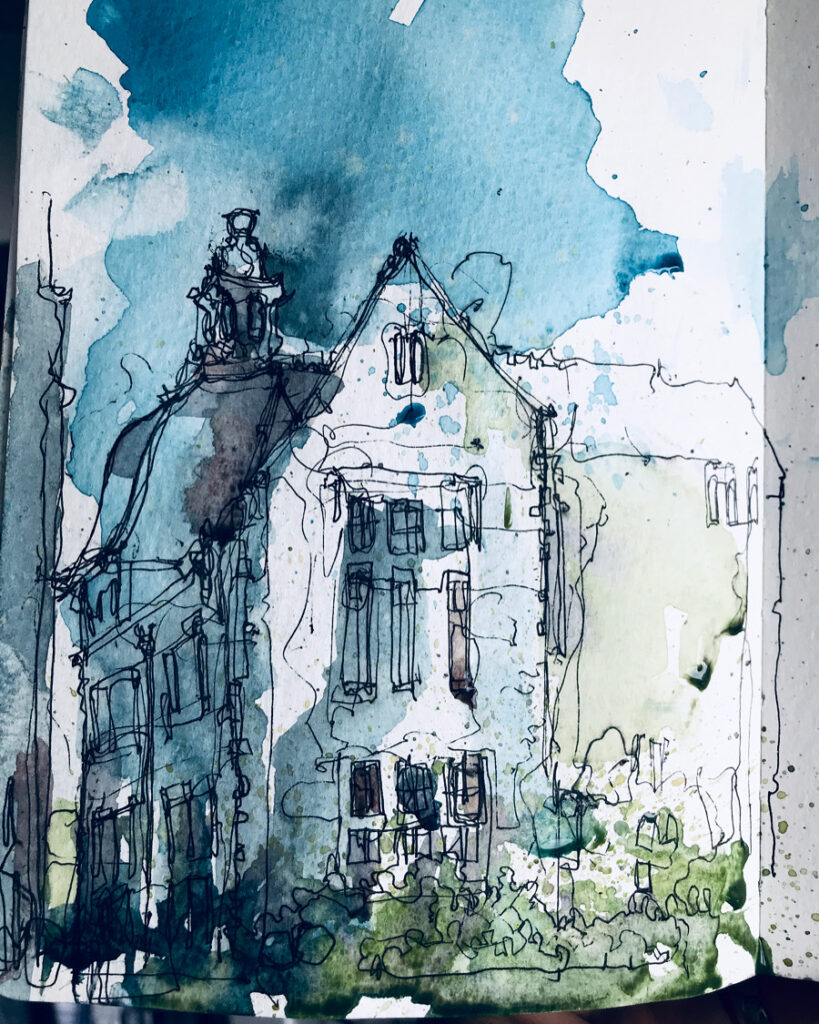
“Art will survive anything and will always be relevant either in retrospect or in the present.”
Neil whitehead
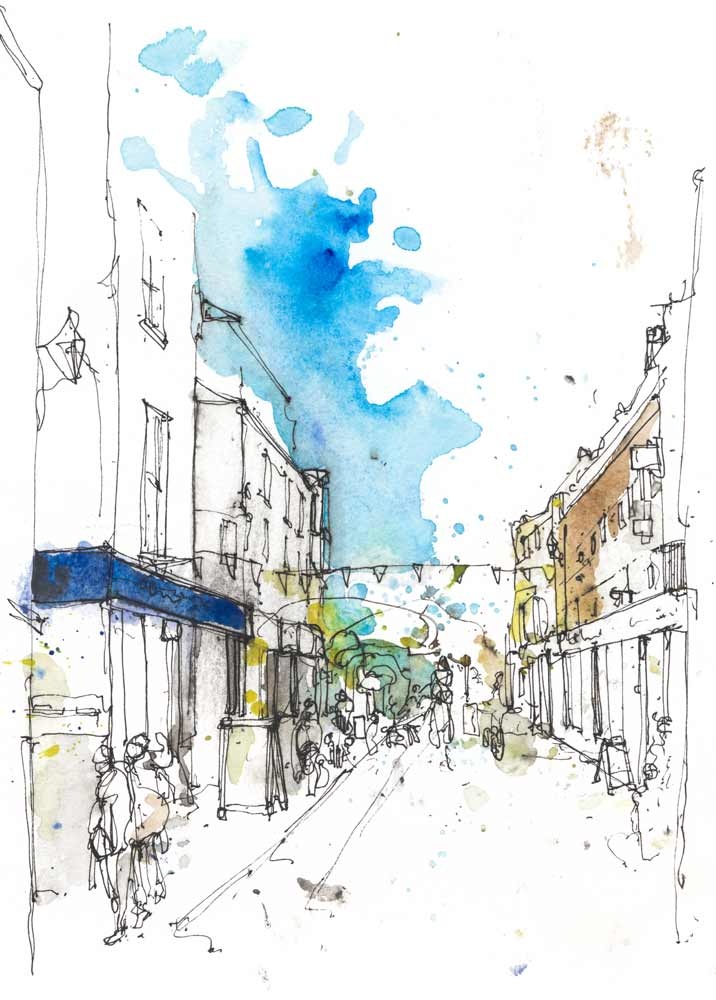
“My love of sketching and mark making started from a young age – I was prolific as a young art student and graduate. Sketching and observation were, and remain, a passion and a natural process of expression. The catalyst for my artistic passion and growth can be directly pinpointed to my teacher as a young teenager. Had I not had the encouragement and drive to succeed at a young age I would not be writing this today. I studied at Art School in the UK and took the path towards graphical/illustrative design and after this continued my studies and took a BA (Hons) at Portsmouth, in Art, Design and Media on the Illustration pathway. My early career was more design-based and communication-based however my fine art aspirations never left me.“
-Neil Whitehead
Pedestrian Space: What is the relationship between the city and your art? How does urbanism influence your work?
Neil: Urbanism is pivotal to my inspiration. Architecture and historic structures carry all sorts of stories and tales that can fuel my vivid imagination. I love the fusion of the modern age framed by listed buildings, historic shop fronts, archways and spires. I adore working with visual depth and sharp perspective and spend a lot of time photographing and physically framing views and vanishing points for the perfect scene. The addition of people and daily life is the element that offers the unexpected twists to authentic ‘urban sketching’ – sketching on location.
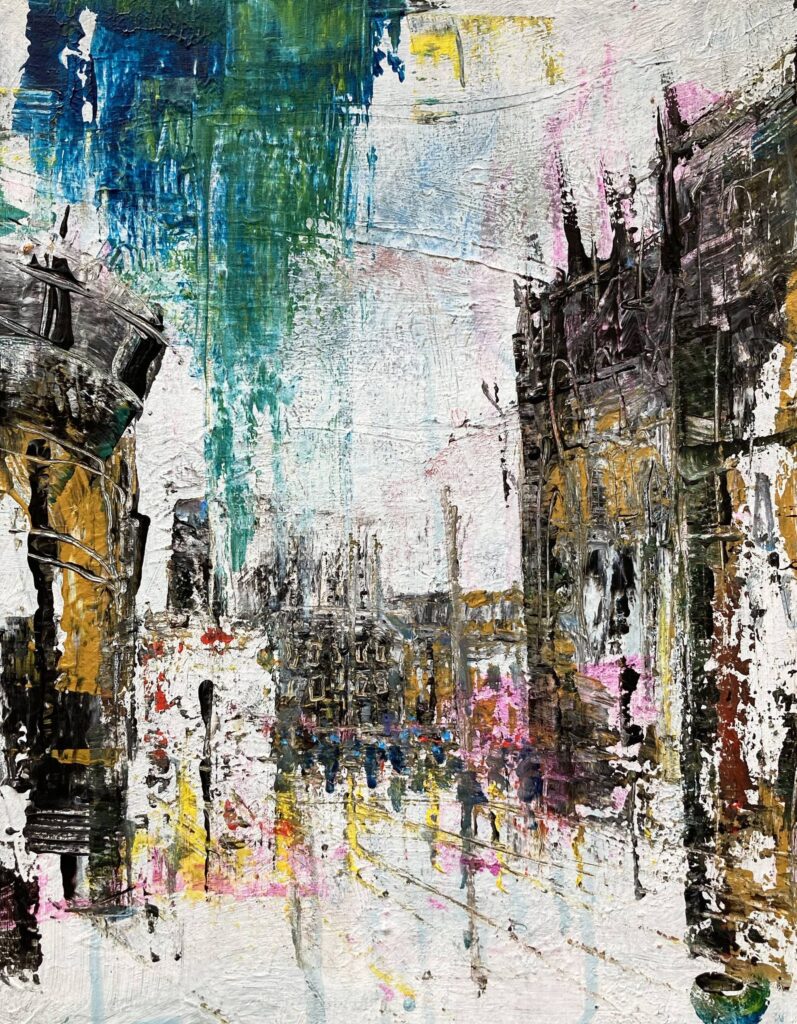
Illustration: Neil Whitehead
Pedestrian Space: What mediums do you work with?
Neil: The daily sketchbook is full of watercolours and fine liner markings. So much water indeed that my books, when full, have warped in size and carry the battle scars of the urban landscape.
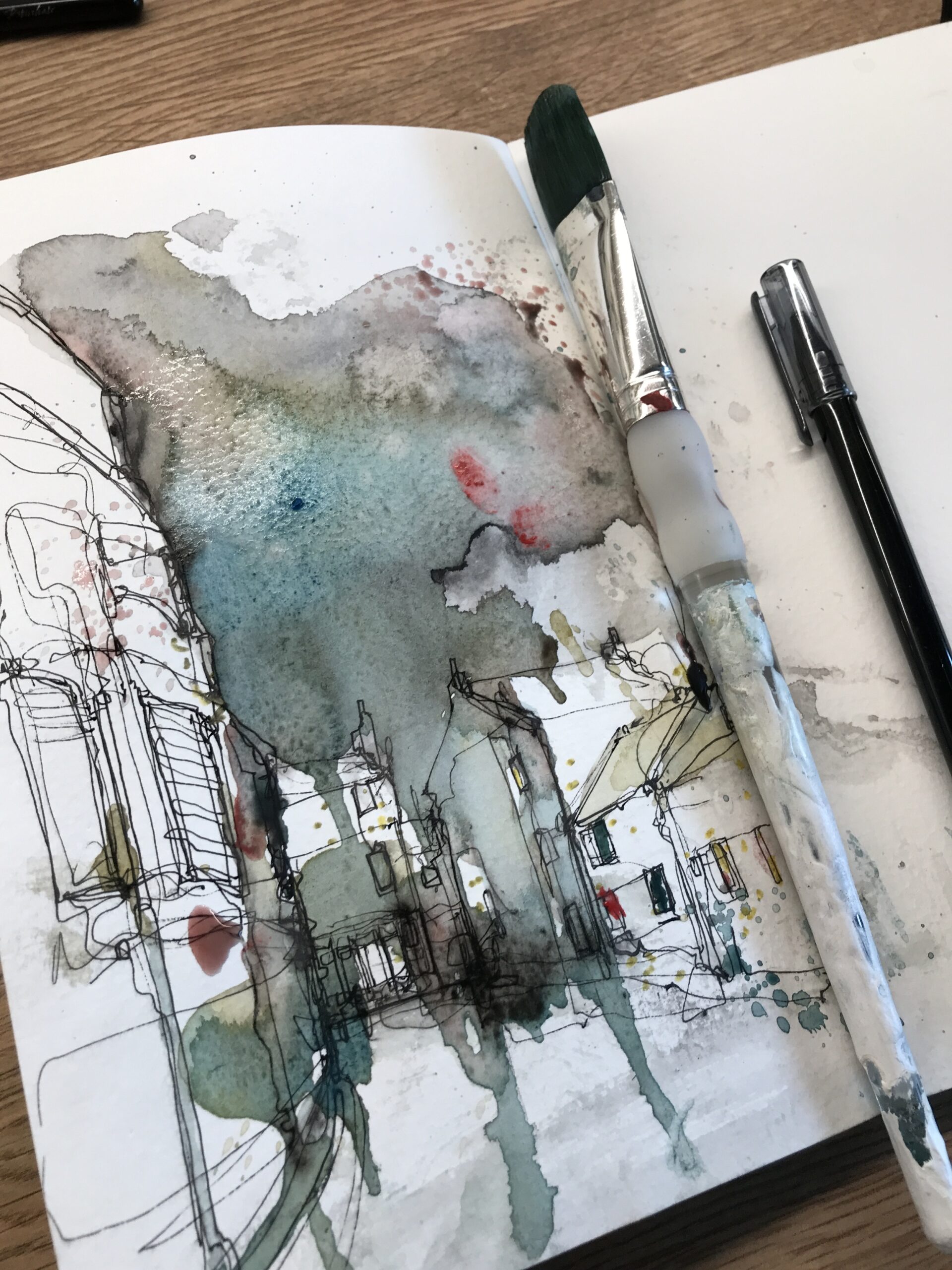
“I grew up in the urban sprawl of South West London, just south of Wimbledon, and worked in central London as a designer on Fleet street as a graduate, just a throw from St. Pauls Cathedral and the Tate Modern. Now married and with a young family I live in Taunton, South West England. The city remains my spiritual home. I was spoilt for architecture in London but indeed most English towns and city structures are steeped in history and a range of styles and influences.”
-Neil Whitehead
Pedestrian Space: We really love the blurred vehicles in the “Love the city” photo series if you can share more on producing these images.
Neil: Photography remains a passion also, having spent many hours in the traditional darkroom as an art student. My ‘city love’ series documents my own development in capturing movement through long exposure – a technique I learnt in the pursuit of capturing the night sky through a telescope. My blurred city shots were quite impromptu and involved just a mini tripod and timing. They all illustrate my craving for sharp perspective and experiments around the rule of thirds. My favourite shot ‘Behold’ was a December capture on Regent street which involved sitting on the kerb (safety advisory!) to capture the angle and to merge the Christmas angel amongst the busy London bus.
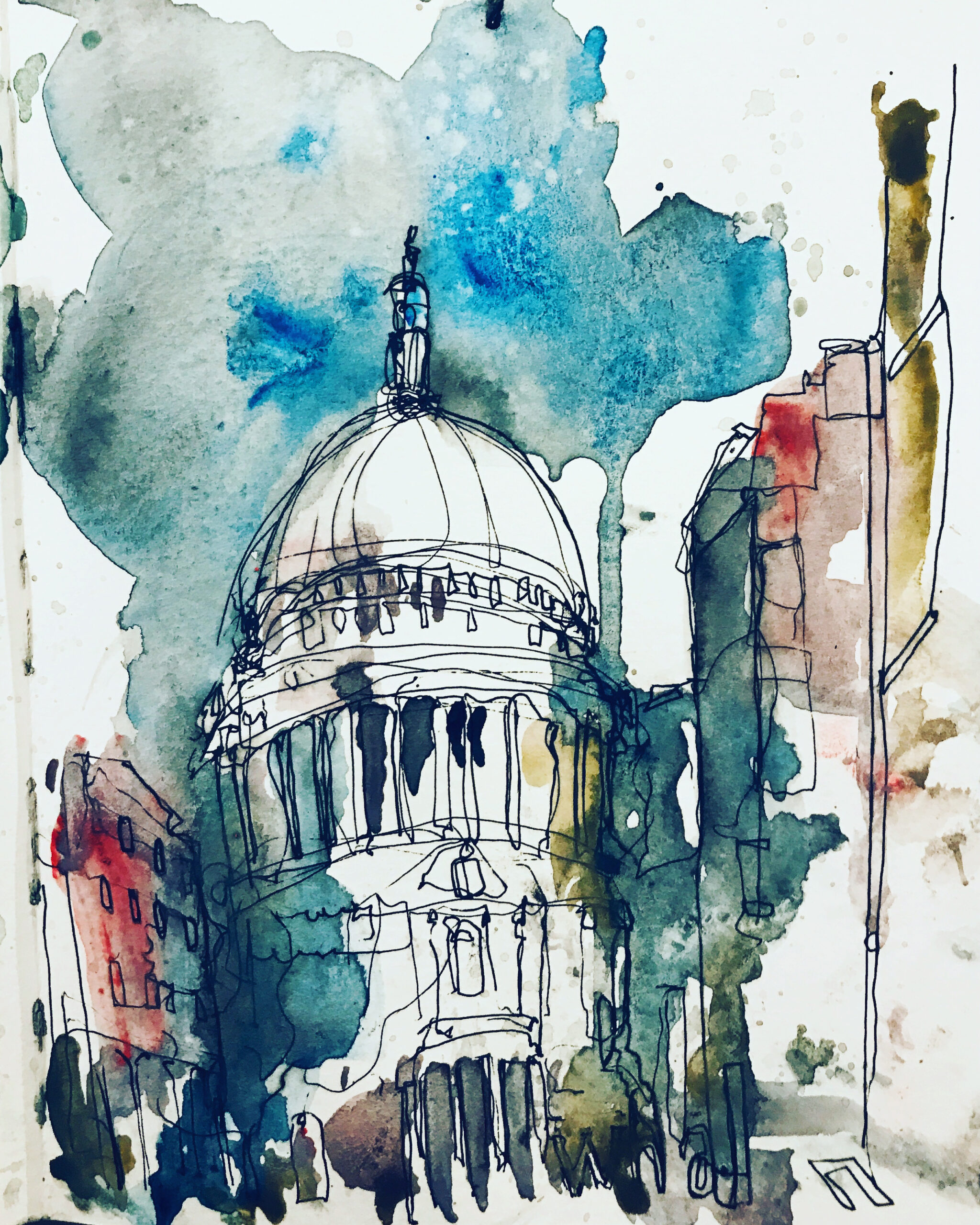
Illustration: Neil Whitehead
“Urbanism is pivotal to my inspiration. Architecture and historic structures carry all sorts of stories and tales that can fuel my vivid imagination. I love the fusion of the modern age framed by listed buildings, historic shop fronts, archways and spires.”
Neil on the relationship between the city and his art
Pedestrian Space: We got completely lost (in the best way!) while exploring your ‘Urban Sketches‘ series! For me, this is what really incredible art depicting the city can do- completely transport you, as if you were there, wandering the streets. Can you share about the inspiration from this series?
Neil: As an urban landscape artist my work is inspired by the cities and towns we live in. An avid urban sketcher, my dedication to sketching on location. Whilst capturing a scene from everyday life, I always seek to bring an element of intrigue and spontaneity to deliver a more ‘artful’ representation rather than capturing a photo-realistic representation. Be it in the rapid sketching style that demands a simplification of the scene or indeed the fluid and spontaneous use of watercolours, both help to add rhythm – the essential ingredient to make it work as a piece of art.
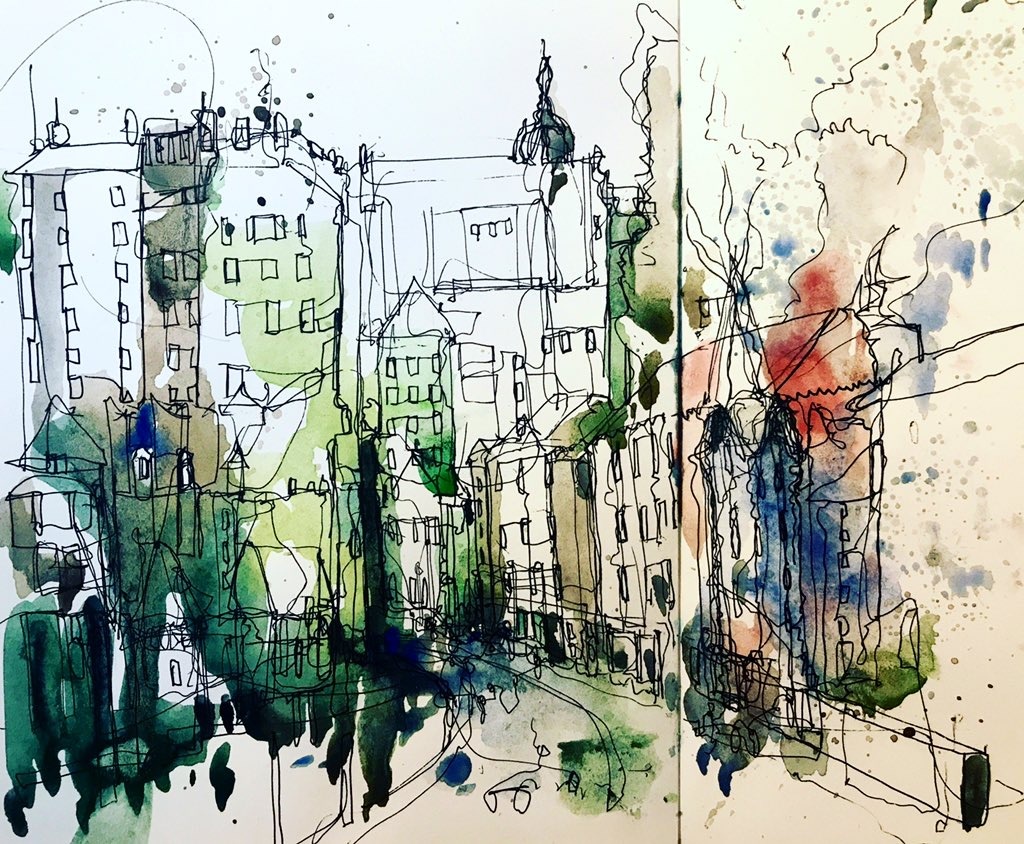
Illustration: Neil Whitehead
Pedestrian Space: How do you move around the city and what is your favorite mode?
Neil: On foot is best, the best locations are those alleyways or roads that are framed better from the pavement. I’m always on the lookout for a contrast in shop frontage or detail that throws up an unexpected colour contrast.
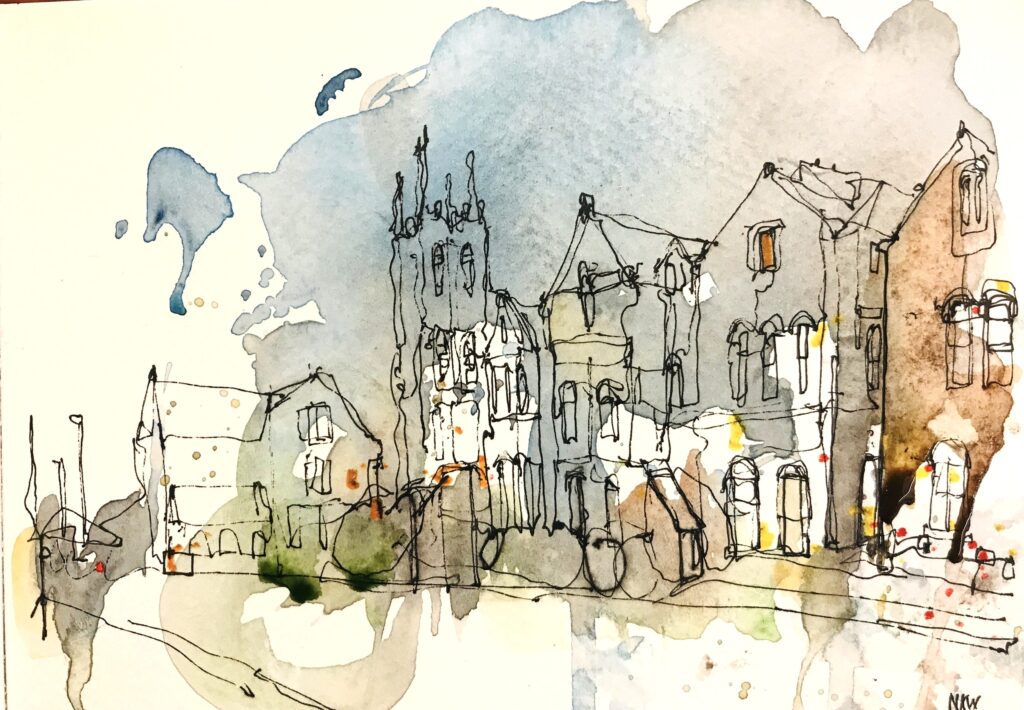
Illustration: Neil Whitehead
Pedestrian Space: What is your favorite street or sidewalk space in your city of residence (or other cities)?
Neil: When I’m in London, I’m drawn to the back streets leading to the business centre. Heading East takes you through Brick Lane and Hoxton which are overlooked by the ever-changing London high-rise skyline. A lifetime of supply.
At home, in Taunton, the scale is obviously smaller but it’s a town steeped in history, as are Bath and Exeter, both nearby cities. I’ve sketched and painted the Taunton Independent Shopping Quarter countless times as it offers people, perspective, colour, movement and a pedestrianised place to camp and observe.
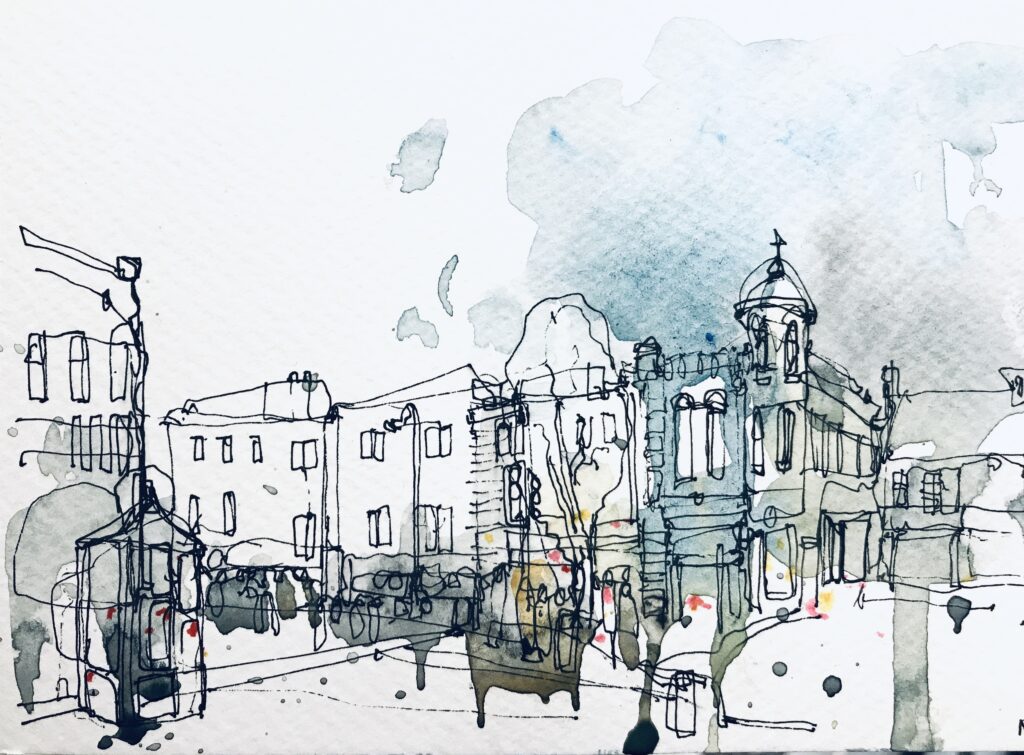
Illustration: Neil Whitehead
Pedestrian Space: Has the pandemic influenced your art in any way or your way of relating to and moving around the city?
Neil: The world has shifted since Covid-19 and our industries and institutions have collapsed and died. Art has predictably taken on a new form in its survival. The digital format has risen, the online exhibition has matured, and a new wave of artists have appeared. Art will survive anything and will always be relevant either in retrospect or in the present. My street sketching had to adjust and I took to more fine art acrylic work referencing my sketchbook content with a dose of imagination.
“With galleries closed, the platforms of Facebook and Instagram have offered a lifeline for artists to reach new audiences and it’s here I’ve seen exceptional growth and opportunity.”
Neil Whitehead
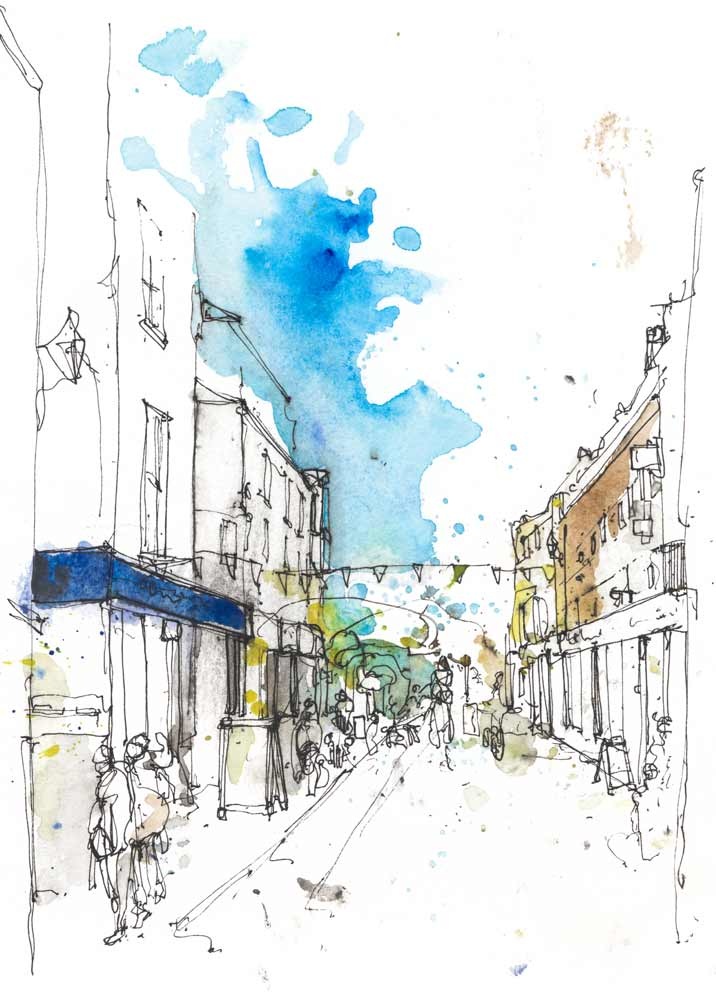
I have reflected heavily on my sketchbook over the last year and adapted many of these pieces into larger more artful creations on canvas that forge visual reference and my imagination. My latest work has begun to explore more abstracted views and techniques that are somewhat out of my comfort zone but as an artist I feel you must constantly be questioning and challenging yourself and treading just ever so slightly out of your depth to make real and pivotal progress.
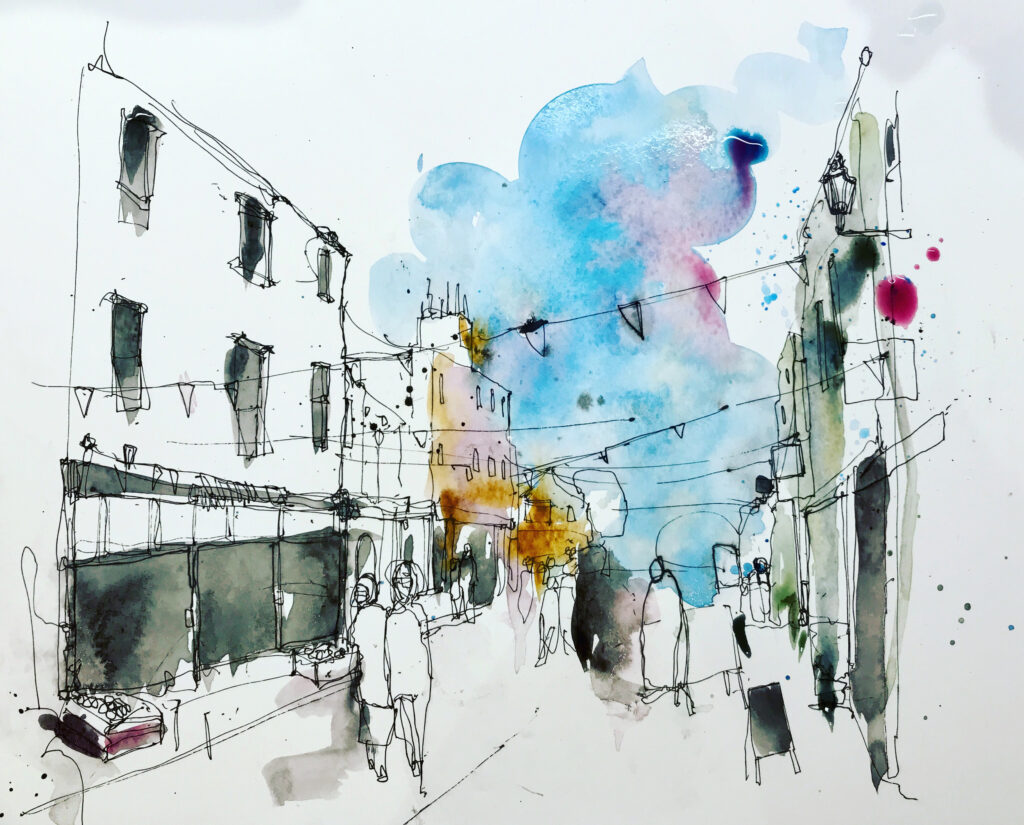
These past 12 months have been huge for me personally with award wins with ‘The Holy Art’ gallery, digital exhibitions and international sales across the USA, Middle East and across Europe, born through the rise in demand for original work that doesn’t fall victim of smartphone photography, which rarely makes its way to printed form on a wall. With galleries closed, the platforms of Facebook and Instagram have offered a lifeline for artists to reach new audiences and it’s here I’ve seen exceptional growth and opportunity.
